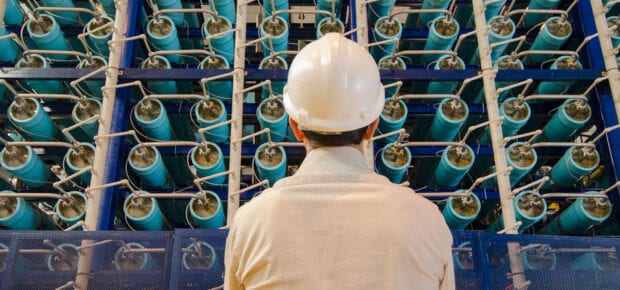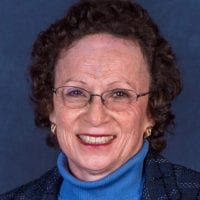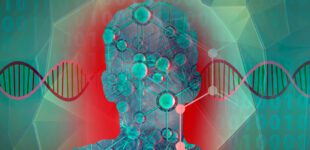February 22, 2021
It is important that our energy grids remain updated with the most recent technology or else citizens will be impacted by inconvenient and more frequent power interruptions. Most electric transmission and distribution lines were constructed in the 1950s and 1960s with a 50-year life expectancy, and many power grids are at full capacity.
IEEE Senior Member Jill S. Tietjen, also a member of the IEEE Power and Energy Society (PES), has also found that the electric utility workforce is reaching retirement eligibility. “There is an age and experience gap,” says Tietjen. “The institutional knowledge transfer issues are recognized and steps are being taken to address them. However, a huge amount of knowledge has the potential to walk out the door.”
With the energy industry now at a crossroads on how to improve our outdated infrastructure, we turn to the next generation of leaders, such as IEEE PES Member and PES Chapters Student Activities Committee Chair Thiago Ribeiro de Alencar, who envisions more technologically advanced, long-term and sustainable solutions for the future of our energy grids.
IEEE: Do you feel there is a lot of weight on your shoulders to improve the energy grid?
Thiago Ribeiro de Alencar: Yes. However, I believe that energy grid challenges bring new opportunities to innovation, new entrepreneurs and interdisciplinary collaboration between different engineering fields. This kind of challenge has motivated me to keep improving my background and brainstorm with several engineering fields to find new interdisciplinary solutions to energy grid challenges.
IEEE: Why did you choose to become an energy engineer?
TRA: The interdisciplinarity opportunities as part of the energy engineering career have motivated me to follow the energy field since I was 14 years old. I started to follow the energy field with parallel technician courses (1. maintenance electrician; 2. instrumentation and process control technician) in high school. A few years later, I completed three undergraduate degrees — aerospace engineering, management engineering and a bachelor in science and technology. However, I kept in contact with interdisciplinary projects under aerospace, energy and management engineering since my first year in university. Later, I completed a Master of Science and PhD in Energy with a focus on AI (artificial intelligence) applied in the optimization of hydropower plant operation.
IEEE: Do you feel like there is important institutional knowledge to learn from current energy engineers?
TRA: Yes. The energy sector has changed in past years with new technologies and challenges. The current energy engineers have grown in a different environment more connected by computers with collaborative work without borders. So, the current energy engineers are very well prepared to face future energy grid challenges with interdisciplinary teams focused on finding new solutions and implementing new technologies like smart grid, big data and artificial intelligence techniques to solve energy grid challenges.
IEEE: What challenges do you see us overcoming in our aging infrastructure? How do you imagine we fix them?
TRA: I believe that smart grid, big data and artificial intelligence will have a key point to drive improvement of the energy infrastructure in the next few years. Energy is an interdisciplinary field and I believe that we will make faster improvements in aging infrastructure with interdisciplinary collaboration between different engineering fields in the coming years.
The IEEE Power and Energy Society has over 470 PES student chapters and more than 10,000 PES students throughout the world; as well as more than 9,000 PES young professionals members who graduated in the last 15 years that help connect the next generation of energy engineers. Find out more here.






 Meaningful Momentum or Running in Place?
Meaningful Momentum or Running in Place? AI Through Our Ages
AI Through Our Ages Liquid Infrastructure: Our Planet's Most Precious Resource
Liquid Infrastructure: Our Planet's Most Precious Resource The Impact of Technology in 2025
The Impact of Technology in 2025 Quantum and AI: Safeguards or Threats to Cybersecurity?
Quantum and AI: Safeguards or Threats to Cybersecurity? Why AI Can't Live Without Us
Why AI Can't Live Without Us Bits, Bytes, Buildings and Bridges: Digital-Driven Infrastructure
Bits, Bytes, Buildings and Bridges: Digital-Driven Infrastructure Impact of Technology in 2024
Impact of Technology in 2024 Emerging AI Cybersecurity Challenges and Solutions
Emerging AI Cybersecurity Challenges and Solutions The Skies are Unlimited
The Skies are Unlimited Smart Cities 2030: How Tech is Reshaping Urbanscapes
Smart Cities 2030: How Tech is Reshaping Urbanscapes Impact of Technology 2023
Impact of Technology 2023 Cybersecurity for Life-Changing Innovations
Cybersecurity for Life-Changing Innovations Smarter Wearables Healthier Life
Smarter Wearables Healthier Life Infrastructure In Motion
Infrastructure In Motion The Impact of Tech in 2022 and Beyond
The Impact of Tech in 2022 and Beyond Cybersecurity, Technology and Protecting Our World
Cybersecurity, Technology and Protecting Our World How Technology Helps us Understand Our Health and Wellness
How Technology Helps us Understand Our Health and Wellness The Resilience of Humanity
The Resilience of Humanity Harnessing and Sustaining our Natural Resources
Harnessing and Sustaining our Natural Resources Creating Healthy Spaces Through Technology
Creating Healthy Spaces Through Technology Exceptional Infrastructure Challenges, Technology and Humanity
Exceptional Infrastructure Challenges, Technology and Humanity The Global Impact of IEEE's 802 Standards
The Global Impact of IEEE's 802 Standards Scenes of our Cyber Lives: The Security Threats and Technology Solutions Protecting Us
Scenes of our Cyber Lives: The Security Threats and Technology Solutions Protecting Us How Millennial Parents are Embracing Health and Wellness Technologies for Their Generation Alpha Kids
How Millennial Parents are Embracing Health and Wellness Technologies for Their Generation Alpha Kids Space Exploration, Technology and Our Lives
Space Exploration, Technology and Our Lives Global Innovation and the Environment
Global Innovation and the Environment How Technology, Privacy and Security are Changing Each Other (And Us)
How Technology, Privacy and Security are Changing Each Other (And Us) Find us in booth 31506, LVCC South Hall 3 and experience the Technology Moon Walk
Find us in booth 31506, LVCC South Hall 3 and experience the Technology Moon Walk Virtual and Mixed Reality
Virtual and Mixed Reality How Robots are Improving our Health
How Robots are Improving our Health IEEE Experts and the Robots They are Teaching
IEEE Experts and the Robots They are Teaching See how millennial parents around the world see AI impacting the lives of their tech-infused offspring
See how millennial parents around the world see AI impacting the lives of their tech-infused offspring Take the journey from farm to table and learn how IoT will help us reach the rising demand for food production
Take the journey from farm to table and learn how IoT will help us reach the rising demand for food production Watch technical experts discuss the latest cyber threats
Watch technical experts discuss the latest cyber threats Explore how researchers, teachers, explorers, healthcare and medical professionals use immersive technologies
Explore how researchers, teachers, explorers, healthcare and medical professionals use immersive technologies Follow the timeline to see how Generation AI will be impacted by technology
Follow the timeline to see how Generation AI will be impacted by technology Learn how your IoT data can be used by experiencing a day in a connected life
Learn how your IoT data can be used by experiencing a day in a connected life Listen to technical experts discuss the biggest security threats today
Listen to technical experts discuss the biggest security threats today See how tech has influenced and evolved with the Games
See how tech has influenced and evolved with the Games Enter our virtual home to explore the IoT (Internet of Things) technologies
Enter our virtual home to explore the IoT (Internet of Things) technologies Explore an interactive map showcasing exciting innovations in robotics
Explore an interactive map showcasing exciting innovations in robotics Interactively explore A.I. in recent Hollywood movies
Interactively explore A.I. in recent Hollywood movies Get immersed in technologies that will improve patients' lives
Get immersed in technologies that will improve patients' lives